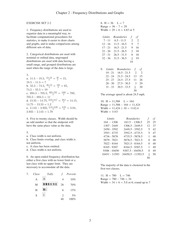Class 8 Science Vk Lab Manual
- Class 8 Science Vk Lab Manual Science-class 10 Online
- Vk Lab Manual Class 9
- Class 8 Science Vk Lab Manual Science-class 10 Pdf


NCERT Class 9 Science Lab Manual Materials. Download NCERT Chapters and Books in pdf format.
* Improve your studying and also get a better grade! * Reduces the hassle and stress of your student life.  But now, with the Elementary Statistics A Step By Step Approach Bluman 8th Edition Solutions Manual, you will be able to * Anticipate the type of the questions that will appear in your exam. All questions will always be answered in 6 hours, most of the time within 30 mins We also faced similar difficulities when we were students, and we understand how you feel.
But now, with the Elementary Statistics A Step By Step Approach Bluman 8th Edition Solutions Manual, you will be able to * Anticipate the type of the questions that will appear in your exam. All questions will always be answered in 6 hours, most of the time within 30 mins We also faced similar difficulities when we were students, and we understand how you feel.
Easy to print and read. Copies of these textbooks may be downloaded and used as textbooks or for reference. Refer to other chapters and books at other links (NCERT now providing you soft copies of all textbooks of all subjects from class first to twelfth online). Materials AIM To study the different parts of a simple (dissecting) microscope.
THEORY The human eye cannot distinguish objects smaller than 0.1 mm. Hence, we cannot observe cells, tissues, and minute organisms through naked eyes. Before the invention of microscope, biologists used lenses that could magnify minute objects only up to some extent. Subsequently scientists started using combination of lenses that led to the invention of microscope. Microscopes are instruments designed to produce magnified visuals of smaller objects.
The simple microscope, also known as dissecting microscope, has a single lens system through which the image of an object is seen. The simple microscope is infact a magnifying lens mounted on a metallic frame in such a way that lens can be mechanically moved up and down or sideways to get a magnified view of the object under observation. Its principle is not different from an ordinary lens used by a watch repairer. MATERIALS REQUIRED A simple (dissecting) microscope, permanent slides of plant (or animal) materials, parts of plants (or small insects), a slide, forceps, and a needle. DESCRIPTION A simple (dissecting) microscope (Fig. 1.1) consists of the following parts.
Base – It is the basal part that is bifurcated and supports the weight of the microscope. It is generally horse-shoe shaped and is made of metal. Stand – It is a short, hollow cylindrical rod fixed to the base. Another small cylindrical rod called vertical limb fits into the stand, at the other end. The vertical limb can be moved up and down, with the help of an adjustment knob attached to the upper end of the stand. Clean the stage, lens and mirror with a soft and dry cloth or with a tissue paper. Place a permanent slide or a slide with an object mounted on it on the stage.
Adjust the mirror to get maximum (reflected) light on to the object. Align the microscope lens over the object under observation. Rotate the adjustment knob to bring the object to clear focus. PRECAUTIONS. Keep the microscope in its box after use. Clean the lens and mirror with a lens cleaning solution. Always wipe the lens and mirror with a piece of silk cloth.
Class 8 Science Vk Lab Manual Science-class 10 Online
Always carry the microscope in an upright position. Use both your hands to hold it. Clean the stage properly before placing the slide. Take care to prevent the microscope lens coming in contact with the slide or an object. QUESTIONS. What is the magnification of the simple microscope you have used?.
Vk Lab Manual Class 9
Why is a simple microscope also called a dissecting microscope?. Which type of mirror is fitted in the simple microscope?
Class 8 Science Vk Lab Manual Science-class 10 Pdf
What is its function? Please refer to attached file for NCERT Class 9 Science Lab Manual Materials.





